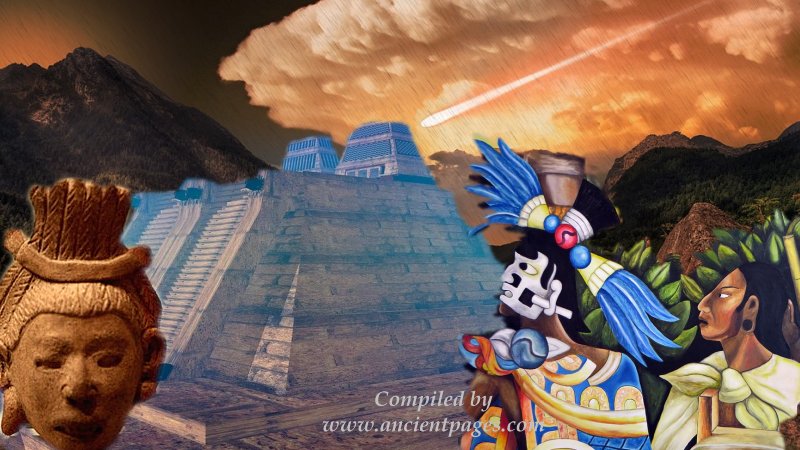Did The 8 Omens Of The Aztecs Foretell The End Of Their Civilization?
Ellen Lloyd – AncientPages.com - Ancient people often believed that dreams or omens could foretell the future. Such signs were regarded as messages from the gods and could only be properly interpreted by a wise person.
In most ancient cultures, a priest or a shaman was responsible for understanding gods' communication with mortals, which is also why these people held a high rank in society.
The Aztecs, once one of the world's greatest civilizations, didn't believe it was possible to change the outcome of future events. Considered the last of the ancient Mexican civilizations, the Aztecs believed that their fate was sealed by powerful forces from their supernatural world.
Historians have analyzed the eight omens of the Aztecs, and these signs provide an essential aspect of how the Aztecs understood the world and thought about the future.
Most historians agree some of the omens appear to be related to the Spanish Conquest of the Aztec Empire in 1521, which led to the end of this ancient Mexican civilization.
The Eight Omens Of The Aztecs
The eight omens can be found in the Florentine Codex, "an ancient document that describes the life of the Aztecs, their religious ceremonies, astronomy, economy, social order, the conquest of Mexico and customs in pre-Columbian Mexico." 1
"As far as can be determined, most of the information in Book XII derived from native informants of Tlatelolco, a city contiguous to and once subordinate to Tenochtitlan.
The first chapter of Book XII records the texts of eight omens, which are described as successive, with the first appearing ten years before the arrival of the Spaniards. While they do not specify the future presence of these Europeans, they unmistakably conveyed messages of impending doom:
1) a flame, "a tongue of fire," appeared in the heavens in the east for a full year, causing panic among the people;
2) the temple of the god Huitzilopochtli mysteriously caught fire;
3) lightning struck the temple of Xiuhtecutli, the god of fire;
4) a comet with a tremendous flaming tail traveled from west to east;
5) the waters of Lake Texcoco became agitated and flooded many of the Aztecs' houses;
6) a woman cried out in the night, "O my beloved sons, now we are about to go!"
7) fishermen snared a water bird with a mirror in its comb, and when Motecuhzoma Xocoyotzin looked into the mirror, he saw images of men dressed in battle garb riding deer, images which vanished as the Mexica ruler attempted to understand their meaning;
8) two-headed men were taken to Motecuhzoma, but when he looked upon them, they vanished." 2
Left: Aztec Gods from the Digital Edition of the Florentine Codex; Right: Aztec feather painters from the Digital Edition of the Florentine Codex. Image via Wikipedia
Unusual Celestial Phenomena
The first and fourth omen describe some celestial phenomena. Scholars suggest the Aztecs witnessed the appearance of a comet in the skies. "The descriptions of terror felt by those who reportedly witnessed the "tongue of fire" and the comet are not exaggerated since such celestial occurrences were often interpreted by the natives of pre-European times to portend harm, and they evoked great fear in the hearts of people." 2
"After Motecuhzoma observed the comet, he questioned his sayers of its possible evil portent. When they claimed they had not seen the comet, he threw them in jail and left them to die of hunger. Motecuhzoma then sent for Nezahualpilli, the ruler of Texcoco, who proclaimed to him that all the destruction of the Texcocan ruler had predicted would come to pass because of the appearance of the comet." 3
The second and third omens also describe some historical destruction that may have occurred during Motecuhzoma's reign.
The Aztecs witnessed a comet in the skies. Credit: Public Domain
"The renderings of destroyed temples in pre-Hispanic and colonial Mesoamerican native pictorial manuscripts represent the destruction of a city or town or the Conquest of a peoples. The destruction of the temples described in these omens may have been devised by a post-Conquest native historian(s), then, to illustrate further the Empire's imminent destruction. Mention of the burning of the temple of Huitzilopochtli ("Hummingbird-on-the-Left") in the second omen is of particular significance since this god was the patron deity and principal protector of the Mexica." 2
The Aztecs had several temples, but their most important and sacred temple complex was built in their capital, Tenochtitlán. According to Spanish chronicles, Templo Mayor, "the first temple (later followed by its twin temple) was built after 1325 and enlarged several times over the course of the 14th and 15th centuries." 4
The temples serve as sacrificial sites to appease the gods. Looking through the eyes of the Aztecs, destroying a temple could only mean an inevitable disaster would disrupt their mighty Empire.
Lake Texcoco Is Boiling
According to the fifth omen, the Aztecs witnessed how the water in their Lake Texcoco started to boil. Then, the water levels rose and flooded homes in their city. There are no historical records of this event, making it plausible to assume "that this episode could have been entirely composed-or, as the case may be, embellished by a colonial-period native historian(s) to serve as an omen of the Conquest.
Certainly, it would have been appropriate for a native to select flooding as the subject of an omen. The residents of Tenochtitlan-Tlatelolco, and the settlements lying on and near the shores of Lake Texcoco, were no strangers to floods, and these inundations were at times interpreted as omens of impending doom." 2
The Prophecy Of A Crying Woman
The sixth omen is about a woman who tells people they must flee the region. It sounds like a prophetic vision of imminent destruction threatening the Aztecs, but there are no historical accounts of this incident either.
"In contemporary Mexico, the association persists of the "crying woman," La Llorona, often heard at night, with bad tidings. There appears to be a fusion of the attributes of La Llorona and those of the mother of the Mexica's gods, Cihuacoatl.
This goddess was sometimes depicted in the codices as weeping, and the melding of the attributes of weeping women with this melancholy goddess may explain why the Mexica bestowed such women with predictive powers. This fusion of mortal and deity is represented in the Florentine Codex." 2
Black Mirror And The Two-Headed Men
The seventh omen is very symbolic. It described how a bird was caught by a hunter to be taken to the Aztec leader, Moctezuma II. The gray bird had a black mirror-like object on its forehead. When the Aztec leader looked into the mirror, he saw the arrival of warriors riding on large horses. It has been interpreted as the arrival of the conquistadors who conquered the Aztec Empire.
Scholars explain that the seventh omen "alludes to Tezcatlipoca ("Obsidian Mirror") who, in addition to being the most powerful deity of the Central Mexican pantheon at the time of Contact, was believed to be the representation of the consummate sorcerer since his origins were associated with the obsidian mirror, an instrument used for divination.
While the association with Tezcatlipoca is less explicit in the eighth omen, the two-headed men likely represent one of the kinds of monstrous forms that were associated with the dark powers of this god.' It would follow that the two-headed men might be interpreted as agents of this god who charged them, as his messengers, to alert Motecuhzoma Xocoyotzin of impending disaster.
The two-headed men are described as phantoms who disappear before they can impart their warnings to the ruler; as in the previous omen, the divine message alluded adequate interpretation. In spite of the fact that the seventh and eighth omens exhibit elements of pre-Hispanic ideology, it is plausible that both had been fashioned after the Conquest by natives who attempted to infuse their relation of the Conquest with an element of predetermination." 2
Did the eight omens foretell the end of the Aztec civilizations? How one answers the questions depends on whether one is inclined to believe in omens or not. However, the Aztecs certainly believed the gods decided their fate, and none of these signs discussed in this article offered a vision of a pleasant future.
On the other hand, the eight omens were written down by the Spaniards, and some unpleasant elements may have deliberately been added to the events to make Aztec history look even more tragic.
Written by Ellen Lloyd – AncientPages.com
Updated on January 7, 2024
Copyright © AncientPages.com All rights reserved. This material may not be published, broadcast, rewritten or redistributed in whole or part without the express written permission of AncientPages.com
Expand for references- A .Sutherland - Florentine Codex: Remarkable Manuscripts About Life Of The Aztecs – AncientPages.com
- Colston, Stephen A. ""No Longer Will There Be a Mexico": Omens, Prophecies, and the Conquest of the Aztec Empire." American Indian Quarterly9, no. 3 (1985): 239-58. Accessed January 25, 2020. doi:10.2307/1183828.
- Alfredo Lopez Austin, Augurios y Abusiones. Introducci6n, Version, Notas y Comentarios de Alfredo Lopez Austin (Mexico: Universidad Nacional Autonoma de Mexico. Instituto de Investigaciones Historicas, Serie de Cultura Nathuatl
- A .Sutherland - Templo Mayor – Sacred Aztec Complex Dedicated To Gods Tlaloc And Huitzilopochtli Who Were Usually Appeased With Human Sacrifices – AncientPages.com
More From Ancient Pages
-
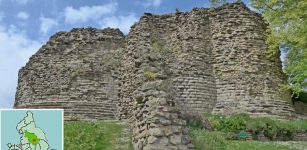 Ancient Town Pontefract, England Reveals Some Of Its Secrets
Archaeology | Mar 28, 2017
Ancient Town Pontefract, England Reveals Some Of Its Secrets
Archaeology | Mar 28, 2017 -
 Were Mysterious Giant Ancient Mustatils In Saudi Arabia Used For Ritual Purposes?
Archaeology | Mar 16, 2023
Were Mysterious Giant Ancient Mustatils In Saudi Arabia Used For Ritual Purposes?
Archaeology | Mar 16, 2023 -
 Acheulian Culture Of Ethiopian Highlands And Their Prehistoric Tool Selection To Make Society’s Life Easier
Archaeology | Jan 10, 2025
Acheulian Culture Of Ethiopian Highlands And Their Prehistoric Tool Selection To Make Society’s Life Easier
Archaeology | Jan 10, 2025 -
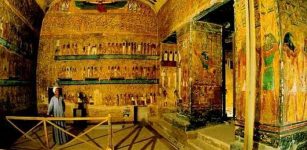 Tomb Of Pharaoh Seti I Is The Largest Tomb In The Valley Of The Kings
Ancient History Facts | Feb 5, 2016
Tomb Of Pharaoh Seti I Is The Largest Tomb In The Valley Of The Kings
Ancient History Facts | Feb 5, 2016 -
 On This Day In History: Charlemagne King Of The Franks And Emperor Of The Holy Roman Empire Born – On April 2, 742
News | Apr 2, 2017
On This Day In History: Charlemagne King Of The Franks And Emperor Of The Holy Roman Empire Born – On April 2, 742
News | Apr 2, 2017 -
 Viking Grave Discovered In The Middle Of Oslo, Norway
Archaeology | Dec 23, 2022
Viking Grave Discovered In The Middle Of Oslo, Norway
Archaeology | Dec 23, 2022 -
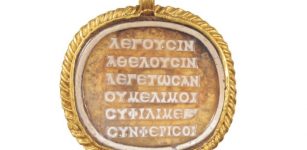 Almost Unknown Ancient Greek Text Rewrites History Of Poetry And Song
Archaeology | Sep 9, 2021
Almost Unknown Ancient Greek Text Rewrites History Of Poetry And Song
Archaeology | Sep 9, 2021 -
 Italian Sailors Knew Of America 150 Years Before Christopher Columbus – Ancient Documents Reveal
Archaeology | Oct 8, 2021
Italian Sailors Knew Of America 150 Years Before Christopher Columbus – Ancient Documents Reveal
Archaeology | Oct 8, 2021 -
 Ancient Mystery Of Upton Chamber Cave In Massachusetts: One Of The Largest Ancient Man-Made Structures In New England
Featured Stories | Oct 10, 2017
Ancient Mystery Of Upton Chamber Cave In Massachusetts: One Of The Largest Ancient Man-Made Structures In New England
Featured Stories | Oct 10, 2017 -
 Political Debates In Ancient Rome: Great Harshness, Personal Attacks And Unpleasant Atmosphere
Archaeology | Aug 29, 2018
Political Debates In Ancient Rome: Great Harshness, Personal Attacks And Unpleasant Atmosphere
Archaeology | Aug 29, 2018 -
 Escape Tunnel From Crusader Citadel In Tiberias To Sea Of Galilee – Discovered
Archaeology | Jun 15, 2017
Escape Tunnel From Crusader Citadel In Tiberias To Sea Of Galilee – Discovered
Archaeology | Jun 15, 2017 -
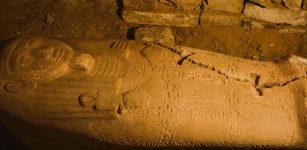 Sarcophagus Of King Ramses II’s Head Of Treasury Found In Saqqara, Giza
Archaeology | Sep 20, 2022
Sarcophagus Of King Ramses II’s Head Of Treasury Found In Saqqara, Giza
Archaeology | Sep 20, 2022 -
 On This Day In History: Cliff Palace At Mesa Verde, Colorado Discovered – On Dec 18, 1888
News | Dec 18, 2016
On This Day In History: Cliff Palace At Mesa Verde, Colorado Discovered – On Dec 18, 1888
News | Dec 18, 2016 -
 On This Day In History: Tokugawa Shogunate Begins In Japan After Historical Battle – On Oct 21, 1600
News | Oct 21, 2016
On This Day In History: Tokugawa Shogunate Begins In Japan After Historical Battle – On Oct 21, 1600
News | Oct 21, 2016 -
 ‘Vandal’ Of Norwegian Viking Graves Identified But Charges Have Been Dropped!
Archaeology | Nov 9, 2020
‘Vandal’ Of Norwegian Viking Graves Identified But Charges Have Been Dropped!
Archaeology | Nov 9, 2020 -
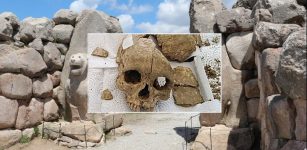 3,500-Year-Old Skull And Thighbone Discovered In Sapinuwa Antique City Of Central Anatolia
Archaeology | Dec 3, 2019
3,500-Year-Old Skull And Thighbone Discovered In Sapinuwa Antique City Of Central Anatolia
Archaeology | Dec 3, 2019 -
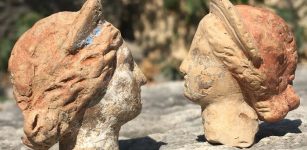 Beautiful Terracotta Figurine Collection Discovered In Myra, Antalya
Archaeology | Sep 29, 2020
Beautiful Terracotta Figurine Collection Discovered In Myra, Antalya
Archaeology | Sep 29, 2020 -
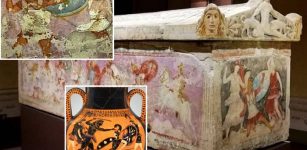 Sarcophagus Of The Amazons: Etruscan Coffin With Paintings Of Dynamic Fighting Scenes Of Greeks With Amazons
Featured Stories | Oct 18, 2022
Sarcophagus Of The Amazons: Etruscan Coffin With Paintings Of Dynamic Fighting Scenes Of Greeks With Amazons
Featured Stories | Oct 18, 2022 -
 On This Day In History: Emperor Gordian II Loses The Battle Of Carthage – On Apr 12, 238 AD
News | Apr 12, 2016
On This Day In History: Emperor Gordian II Loses The Battle Of Carthage – On Apr 12, 238 AD
News | Apr 12, 2016 -
 DNA Study Shows Pre-Historic Wallacea Was A Melting Pot Of Human Genetic Ancestries
Archaeology | Jun 9, 2022
DNA Study Shows Pre-Historic Wallacea Was A Melting Pot Of Human Genetic Ancestries
Archaeology | Jun 9, 2022

